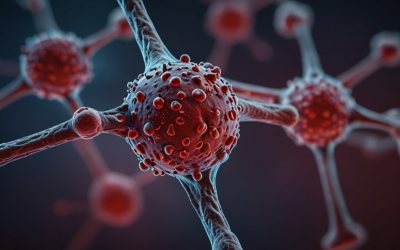As you navigate the intricate battlefield of viral infections, it’s essential to consider the arsenal of antiviral measures at your disposal for suppressing these microscopic invaders. You’re well aware that the journey from a high viral load to the coveted undetectable status isn’t a simple trek—it’s a complex interplay of medical, behavioral, and societal strategies. While you’ve likely heard of antiretroviral therapies and their successes, you may not be as familiar with the innovative approaches that are reshaping the landscape of viral suppression. Let’s explore the intricate dance between virus and antiviral, where each step is critical and the music never stops. What new melodies might researchers have composed in the symphony of suppression that could alter the way you think about fighting these pervasive threats?
Key Takeaways
- Antiviral medications can reduce viral load in individuals with HIV.
- Adherence to antiretroviral therapy (ART) is crucial for viral suppression.
- Achieving an undetectable viral load is the primary goal of HIV treatment.
- Regular viral load testing ensures treatment effectiveness.
Understanding Antiviral Medications

Antiviral medications, when taken consistently, can significantly reduce the viral load in individuals with HIV, promoting a healthy immune response and diminishing the likelihood of disease transmission. You’ll find that antiretroviral therapy (ART) is pivotal in managing HIV infection. By adhering to a regimen of antiretroviral drugs, patients can achieve viral suppression, which is vital for both their own health and the wellbeing of others.
An undetectable viral load is the primary goal of HIV treatment. This means that the amount of HIV in the blood is so low that it cannot be detected by standard viral load tests. Achieving this status doesn’t mean the virus is gone, but it does indicate that the virus is not actively damaging the immune system and that the risk of transmission is greatly reduced—a concept known as “treatment as prevention.”
To maintain a virally suppressed state, it’s crucial to take antiretroviral medications as prescribed, without missing doses. Drug resistance can occur if the virus mutates, which is more likely when medication adherence falters. Regular monitoring through viral load testing, typically every three to four months, ensures that the treatment remains effective and allows for timely adjustments if necessary.
In your service to others, encourage open dialogue about HIV Treatment, which includes educating on the importance of adherence and understanding the implications of an undetectable viral load. Discussing prevention methods, such as pre-exposure prophylaxis (PrEP) for partners, can further support adherence and reduce the risk of HIV transmission. By doing so, you empower those affected to lead healthier lives while actively participating in the prevention of the disease’s spread.
Vaccination Strategies and Impact
To effectively combat the spread of HIV, vaccination strategies have emerged as a key component of comprehensive prevention efforts, aiming to prime the immune system to fend off the virus. When you consider the intricate interplay between HIV and the immune system, it becomes clear that vaccination offers a promising avenue to enhance the body’s defense mechanisms.
While no vaccine can yet prevent HIV infection, you’re likely aware that vaccines for other viruses, such as hepatitis B, can prevent infections that could complicate HIV treatment and increase transmission risk. Furthermore, therapeutic vaccination strategies for individuals already living with HIV are under investigation, with the goal of achieving functional control over the virus, leading to an undetectable viral load without the need for continuous antiretroviral therapy.
As you strive to serve others, it’s important to recognize the impact of vaccination on viral suppression and the prophylaxis of opportunistic infections. The integration of vaccination into HIV treatment plans can bolster the efficacy of antiretrovirals, reducing the risk of transmission and aiding in the prevention of co-infections. Here’s a table to help clarify the role of vaccines in HIV management:
| Vaccine Type | Purpose & Impact |
|---|---|
| Preventative (e.g., Hepatitis B) | Reduces risk of co-infections and further health complications |
| Therapeutic (Experimental for HIV) | Aims to control HIV, potentially leading to an undetectable viral load |
| Prophylactic | Supports prevention strategies by reducing overall infection risk |
| Adjunct to Treatment | Enhances antiretroviral effectiveness and overall viral suppression |
Your commitment to understanding these strategies not only aids in the fight against HIV but also embodies a compassionate approach to healthcare, emphasizing prevention as a cornerstone of treatment.
Behavioral Interventions for Prevention

While vaccination represents a critical line of defense in HIV management, equally important are the behavioral interventions that support prevention efforts and enhance the effectiveness of treatment. As someone committed to serving others, you should understand that consistent adherence to medication is paramount for people with HIV to achieve and maintain an undetectable viral load. This not only improves their health but is key in preventing sexual transmission of HIV.
Encouraging open communication and involving partners in treatment plans can significantly improve medication adherence, thereby reducing the risk of transmission to others. It’s essential to foster environments where such discussions are normalized and supported.
In addition to these measures, you can advocate for the use of prophylaxis (PrEP), a preventative medication for the HIV-negative partner at substantial risk for HIV. PrEP has been a game-changer in the Prevention of HIV Infection, offering an added layer of protection alongside other behavioral interventions for prevention.
Regular testing for other sexually transmitted infections should also be promoted, as they can increase the risk of acquiring and transmitting HIV. Healthcare providers are instrumental in providing personalized guidance on HIV suppression and treatment. They can help individuals understand the benefits of treatment adherence and select the most suitable HIV medicine tailored to their needs.
Staying informed about the latest in HIV prevention, care, and treatment is crucial. Accessing resources for HIV testing, PrEP, and continuing education opportunities empowers those living with and affected by HIV to take control of their health and prevent the sexual transmission of HIV effectively. Your role in disseminating this knowledge and supporting these practices is invaluable in the collective effort to curb the HIV epidemic.
Public Health Policies and Protocols
Public health policies and protocols serve as the backbone for establishing comprehensive strategies to combat the spread of HIV, guiding both healthcare professionals and the community in prevention, testing, and treatment efforts. These policies are pivotal in mitigating HIV transmission by informing the populace about how the virus is spread and the significance of early diagnosis and treatment.
As you immerse yourself in the field, you’ll find that antiretroviral therapy (ART) is the cornerstone of HIV Treatment and Prevention. When adhered to consistently, ART can maintain a suppressed or undetectable viral load. This is not only beneficial for the health of the individual but also crucial in public health because when a viral load is undetectable, the chance to transmit HIV is dramatically reduced.
Public health protocols outline the necessary steps to identify and address virus infection, including HIV. They encompass guidelines for testing frequency, reporting new cases, and notifying partners who may have been exposed. These protocols ensure that treatment options are provided promptly and effectively, minimizing the risk of further transmission.
The National Center for HIV/AIDS, Viral Hepatitis, STD, and TB Prevention is a resource for up-to-date guidance on public health policies and protocols. It provides evidence-based recommendations that you, as someone dedicated to serving others, can trust. These policies and protocols are designed to empower communities with knowledge, reduce stigma, and promote health equity.
Understanding and adhering to public health policies and protocols is essential. It’s through these measures that you can contribute significantly to the fight against HIV, ensuring that those affected receive the support and care they need to lead healthy lives.
Innovations in Antiviral Therapies

Advancements in antiviral therapies have ushered in a new era of treatment options, such as long-acting injectable medications, that offer individuals living with HIV greater flexibility and efficacy in managing their condition. The introduction of these innovative drug regimens provides a transformative approach to antiretroviral therapy, particularly for those who find it challenging to adhere to a daily pill regimen.
In the context of HIV medicine, maintaining a suppressed viral load is critical. Scientific evidence underscores the importance of this goal, as those who keep an undetectable viral load not only safeguard their own health but also drastically reduce the risk of transmitting HIV. Here’s what you need to know about the latest in antiviral therapy:
- Long-Acting Injectable Therapy: Newly available drugs, like the combination of cabotegravir and rilpivirine, are game-changers for those who have achieved viral suppression with traditional oral regimens.
- Undetectable Equals Untransmittable (U=U): Sustained and maintained viral suppression for at least six months effectively prevents transmission to sexual partners, supporting the U=U campaign.
- Monitoring Viral Load: Regular testing, typically every three to four months, is essential to ensure that the virus remains suppressed and to detect any viral load blips, which, while not indicative of treatment failure, require consistent medication adherence.
- Communication and Prevention: Discussing treatment and transmission risk openly, including the consideration of PrEP for partners, enhances adherence and further reduces the risk of HIV spread.
Monitoring and Surveillance Techniques
Monitoring your viral load through sophisticated surveillance techniques is essential for maintaining undetectable levels and ensuring the continued effectiveness of antiviral therapies. Once you’ve initiated antiretroviral therapy, surveillance of your viral load becomes a cornerstone of your treatment plan. It’s crucial to understand that, generally, viral load becomes undetectable within six months or less after starting treatment. However, this timeline can vary depending on individual factors and adherence to HIV medicine.
Rigorous and regular monitoring allows for the assessment of RNA levels within your bloodstream. This isn’t a daily test, but rather a scheduled evaluation that provides insight into how well the antiretroviral therapy is working. If you’re adhering consistently to your medication regimen, you’ll increase the likelihood of reaching and maintaining those undetectable levels. It’s important to remember that undetectable levels significantly reduce the risk of HIV transmission, which is an essential consideration when involving partners in your treatment plan.
Surveillance techniques have evolved to provide more accurate and rapid results. You should engage in open discussions with your healthcare provider about the time to viral suppression and the importance of continued monitoring. Stopping antiretroviral therapy isn’t advised without medical consultation, as it could lead to a viral rebound and an increased transmission risk.
Community Education and Engagement
While regular surveillance of viral load is fundamental in managing HIV, informing and engaging communities plays a crucial role in amplifying the success of antiviral measures and enhancing viral suppression outcomes. It’s not just about the individual taking HIV medicine, but about how you, as part of the community, understand and support these efforts.
Here’s how community education and engagement can make a difference:
- Increasing HIV Medicine Adherence: When a person takes HIV medicine daily, they maintain a lower viral load, which reduces the risk of transmission. Education initiatives help people living with HIV understand the importance of adherence to antiretroviral therapy.
- Enhancing Understanding of Viral Suppression: It’s essential that you grasp the concept of viral suppression and its role in the fight against the HIV epidemic. Community programs aim to clarify that an undetectable viral load means the virus is not transmissible.
- Preventing Co-Infections: By addressing sexually transmitted infections (STIs) alongside HIV education, communities can tackle the broader spectrum of sexual health, reducing the overall burden of disease and preventing new HIV diagnoses.
- Encouraging Early HIV Diagnosis: Timely testing and diagnosis are paramount. Through community engagement, you can help others overcome the stigma associated with HIV and encourage early testing and treatment initiation.
As someone dedicated to serving others, you recognize the power of community education and engagement in the context of HIV. By promoting informed conversations and decision-making, you’re not just helping to manage the virus; you’re contributing to a collective effort to end the HIV epidemic. Your role is crucial in ensuring that the message of health, hope, and resilience reaches every corner of the community.











